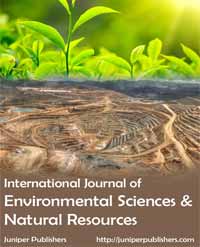Statistical Method to Evaluate the Relationship between Climatic Factors during the Development Periods of Flowering and Boll Formation and Cotton Production: (IJESNR) - Juniper Publishers
JUNIPER PUBLISHERS-OPEN ACCESS JOURNAL OF ENVIRONMENTAL SCIENCES & NATURAL RESOURCES
Statistical Method to Evaluate the Relationship between Climatic Factors during the Development Periods of Flowering and Boll Formation and Cotton Production
This study investigated the relationship between climatic factors and
production of flowers and bolls obtained during the development periods
of the flowering and boll stage, and to determine the most
representative period corresponding to the overall crop pattern.
Evaporation, sunshine duration, relative humidity, surface soil
temperature at 1800 h, and maximum air temperature, are the important
climatic factors that significantly affect flower and boll production.
There was a negative correlation between flower and boll production and
either evaporation or sunshine duration, while that correlation with
minimum relative humidity was positive. Higher minimum relative
humidity, short period of sunshine duration, and low temperatures
enhanced flower and boll formation. It could be concluded that the
fourth quarter period of the production stage is the most appropriate
and usable production time to collect data for determining efficient
prediction equations for cotton flower and boll production, and making
valuable recommendations.
For more articles in Open Access Journal of Environmental Sciences & Natural Resources please click on: https://juniperpublishers.com/ijesnr/
To know more about Peer Review Journal of Environmental Sciences & Natural Resources
To read more…Fulltext please click on: https://juniperpublishers.com/ijesnr/IJESNR.MS.ID.555552.php




Comments
Post a Comment